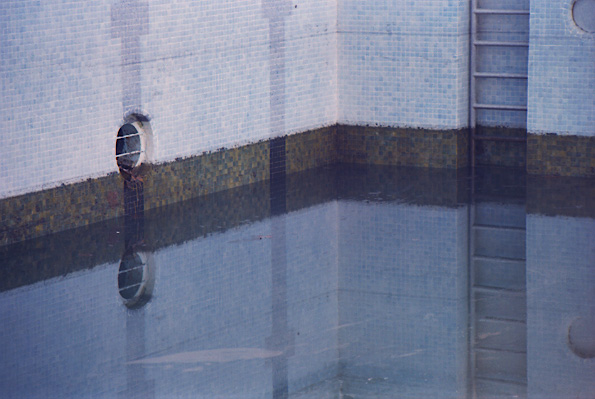Voids of Modernity
Contributor
Reciprocal Landscapes
My previous column ended by asserting that a building without people doesn’t exist. Well, that is a lie. It exists. From Chinese ghost towns to Roman ruins to deindustrialized American cities, the absence of a body in a place doesn’t mean that the place is dead. It doesn’t even mean that the place is dying. It only means the flux of labor and money has left this place, making it impossible, or unbearable, for people to live there. These places are, in a sense, dangerous voids, because they flirt with the anti-life created by human development. They are also melancholic because they frame how small we are, as individuals, when facing Time, Nature, the State, or Capital.
Modernity has accelerated the process of consuming matter, creating a global web of “lacunae” in reality’s fabric. More than dislocating commodified material (including enslaved humans) from Africa to Europe, the capitalist web of empty spaces is a web of spaces empty of people. By moving faster than our bodies, capitalist societies leave a trace of spiritual (mind and body) wastelands. Architecture partakes in this process through the construction of three voids: the earth void, by the consumption of construction materials; the building void, by the dislocation of bodies from the built environment; and the place void, made possible by the modern project of universalization and space abstraction. This last project is a disconnection between the place and the body, the very annihilation project of capitalism, first drafted in the utopian texts of Morus and many others beginning in the Renaissance.
As Michel Foucault reminds us, a utopia is in essence a topos outside the reality of our bodies, a topos without place. Utopia, then, is both revolutionary and oppressive. The interconnection between the utopian agenda and designing/projecting for the forthcoming, a “projectile” towards the future, is blatant. Architecture as a liberal profession is born from this modern aesthetics of dislocation, producing a “disembodiment” of futurity, a future without bodies, or better saying, a future made of ideal (impossible) bodies. It is no mere coincidence that the genre of science fiction has its roots in Victorian England and the Soviet Union, the precise moment when modernity achieved its maximum mechanization during the Industrial Revolution. These hasty processes of development resulting from industrialization has created a new topos—dystopia. It unfolds a world of strangeness, pain and body dissolution. Dystopia is a displaced topos, a bad place. Like the medieval cities devoured by capitalistic forces, the Tokyo of the dystopian film Akira (1988) builds at a frantic pace, feeding itself on a decadent human community.
Neither utopia nor dystopia are possible worlds for the body. The modern void of Corbusier’s “free plan” and the “free span” of brutalist megastructures are the perfect images of this futurity. But its promise of freedom fails because it enacts the continuation of a predatory, dehumanizing, and disembodied project of society. Freedom made of voids is a place without a body. So, restating my previous column’s conclusion: a place without a body can exist, but it cannot breathe.

Cabello/Carceller, Sin titulo (Utopia) #9, 1998-99.